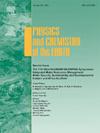Fractal interpretation and forewarning of mining area disasters via microseismic time-space-energy nested
IF 3
3区 地球科学
Q2 GEOSCIENCES, MULTIDISCIPLINARY
引用次数: 0
Abstract
The mining of deep metal deposits faces frequent disasters such as ground pressure. Although microseismic monitoring technology is widely used, the nonlinear and disordered characteristics of its signals increase the difficulty of disaster prediction. To effectively process and analyze chaotic microseismic signals, and apply them to disaster warning in mining sites. We introduce fractal theory to conduct data analysis and fractal interpretation of microseismic data, thereby revealing the evolution laws of microseismic events. A new warning method based on spatiotemporal energy fractal dimension is proposed by combining theoretical analysis, numerical simulation, and field experiments. Taking a copper mine in Xinjiang as an example, microseismic monitoring technology is used to obtain time-space-energy parameters of rock mass failure, and fractal dimension is applied to characterize the state and development trend of rock mass failure. By studying the mechanical properties of rock masses and the time-space-energy evolution of microseismic activity, the effectiveness and practicality of rock mass regional failure characterization and forewarning methods based on microseismic monitoring have been verified. Specifically, when the time series is 3.26 days and the spatial unit is 6.97 m ∗ 7.88 m ∗ 1.67 m, and the maximum 25 % energy fractal dimension interval is used as the threshold, the event prediction rate is 96.875 %.
微震时-空-能嵌套分形解释与矿区灾害预警
深部金属矿床的开采面临着地压等灾害的频繁发生。微震监测技术虽然应用广泛,但其信号的非线性和无序特性增加了灾害预测的难度。有效地处理和分析混沌微震信号,并将其应用于矿区灾害预警。引入分形理论对微震资料进行数据分析和分形解释,揭示微震事件演化规律。通过理论分析、数值模拟和现场试验相结合,提出了一种基于时空能量分形维数的预警方法。以新疆某铜矿为例,利用微震监测技术获取岩体破坏时-空-能参数,并利用分形维数表征岩体破坏状态及发展趋势。通过对岩体力学特性和微震活动时-空-能演化的研究,验证了基于微震监测的岩体区域破坏表征和预警方法的有效性和实用性。具体而言,当时间序列为3.26 d,空间单位为6.97 m∗7.88 m∗1.67 m,以最大能量分形维数25%区间为阈值时,事件预测率为96.875%。
本文章由计算机程序翻译,如有差异,请以英文原文为准。
求助全文
约1分钟内获得全文
求助全文
来源期刊

Physics and Chemistry of the Earth
地学-地球科学综合
CiteScore
5.40
自引率
2.70%
发文量
176
审稿时长
31.6 weeks
期刊介绍:
Physics and Chemistry of the Earth is an international interdisciplinary journal for the rapid publication of collections of refereed communications in separate thematic issues, either stemming from scientific meetings, or, especially compiled for the occasion. There is no restriction on the length of articles published in the journal. Physics and Chemistry of the Earth incorporates the separate Parts A, B and C which existed until the end of 2001.
Please note: the Editors are unable to consider submissions that are not invited or linked to a thematic issue. Please do not submit unsolicited papers.
The journal covers the following subject areas:
-Solid Earth and Geodesy:
(geology, geochemistry, tectonophysics, seismology, volcanology, palaeomagnetism and rock magnetism, electromagnetism and potential fields, marine and environmental geosciences as well as geodesy).
-Hydrology, Oceans and Atmosphere:
(hydrology and water resources research, engineering and management, oceanography and oceanic chemistry, shelf, sea, lake and river sciences, meteorology and atmospheric sciences incl. chemistry as well as climatology and glaciology).
-Solar-Terrestrial and Planetary Science:
(solar, heliospheric and solar-planetary sciences, geology, geophysics and atmospheric sciences of planets, satellites and small bodies as well as cosmochemistry and exobiology).
 求助内容:
求助内容: 应助结果提醒方式:
应助结果提醒方式:


